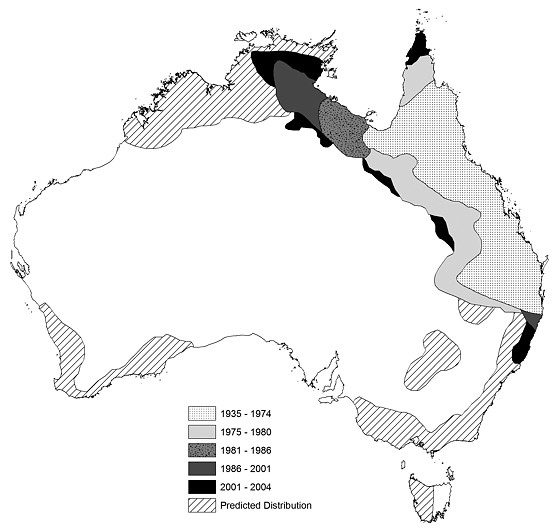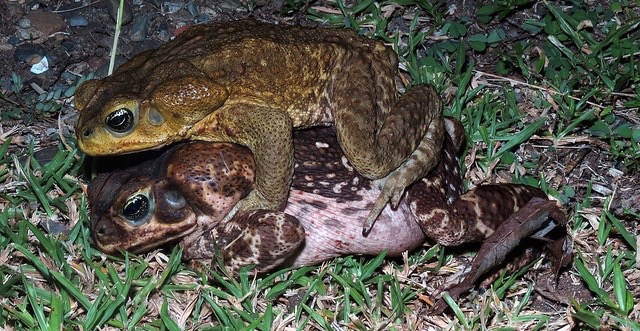Cane toads were first released in Australia in 1935 as part of a government program to control the insects attacking the Queensland cane crop. It didn’t work. Ever since, the toads have been spreading across the country, as fast as they can breed. Which would be even faster, if it weren’t for an odd quirk in their mating strategies.

Like many invasive species, cane toads face an interesting dilemma. A toad is more likely to be able to find a mate if it stays near its birthplace, but more toads also means a lot more competition for food and other resources. Toads that pull up stakes and move toward the toad-less frontier may have an easier time finding food but a much harder time finding mates. Some studies have shown that the dilemma is shaping cane toad evolution within Australia: toads on the outer edge of their expanding range have evolved longer legs and can travel up to five times faster than their cousins living in more established populations.
According to a new paper in the Biological Journal of the Linnean Society, it turns out that the physical differences associated with cane toad dispersal also affects their ability to make babies. It seems that female cane toads can excel at either walking or breeding, but not both.
University of Sydney biologist Cameron Hudson learned this by comparing the egg masses laid by female toads collected from different regions of Australia. He collected toads from places where they had lived ever since they were first introduced to the continent, as well as places at the front edge of their expanding range. When he injected the females with hormones that made them release their eggs, he found that although both groups of toads laid about the same number of eggs at a time, females from populations that had been established longer were more likely to lay, and would sometimes lay more than one clutch of eggs.
For some still-unknown reason, the females that disperse are not as good at making babies as the females that stay put. With luck, this sort of information could help Australian conservationists pinpoint where to focus their efforts toward cane toad eradication. Or given their luck so far, it might give them a bleak picture of the future, where the fast toads invade, and the slower, more fecund toads fill in the space behind them.
Pictures: Katja Schulz via Flickr; Toad spread map from Australia DEH (2006)
